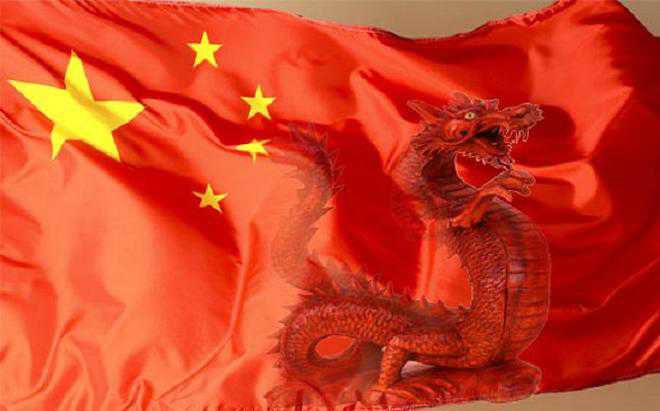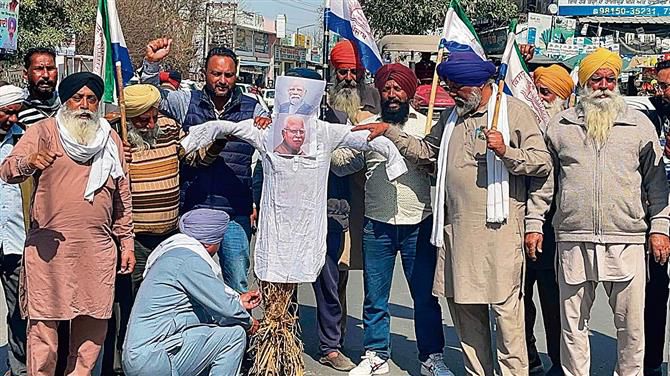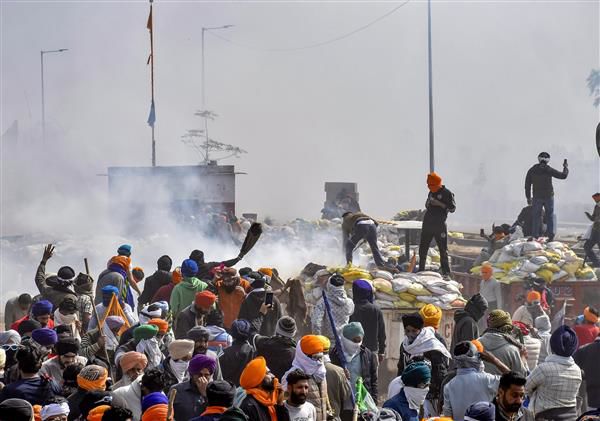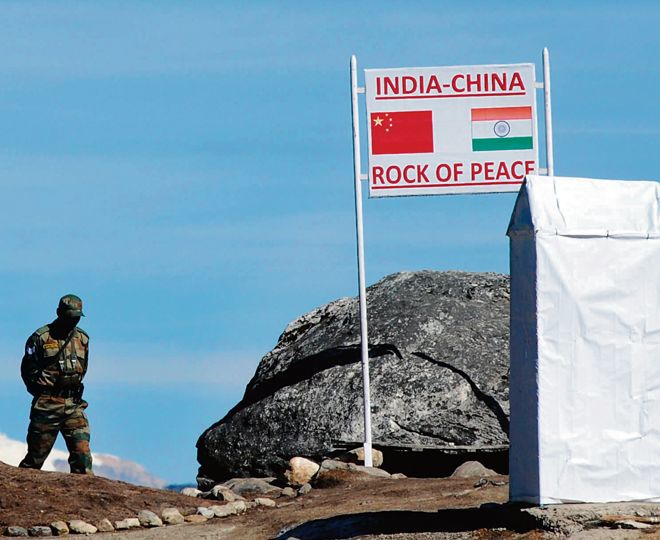Western Tibet has a rich historical background, particularly in proximity to Mount Kailash, near the trijunc tion between India, Nepal and Tibet. It is the case of Purang/Taklakot and a place called Toyo, located a few kilometres away, which have gone down in history for the epic battle between the Dogras of Gen. Zorawar Singh and the Tibetans troops. In December 1841, the Dogra troops, who had just conquered Western Tibet (known as Ngari), were defeated by the Tibetans — and also by the winter. The great Tibetan historian, Tsepon Shakabpa, thus described the battle of Taklakot/Toyo: “The Tibe tan government quickly dispatched Ü Dapön [Gen.] Shedra Wangchuk Gyelpo and the Ü Tsang [Central Tibet] militia under the leadership of Cabinet min ister Pellhün; when they arrived in Ngari, one regi ment of the foreign army [the Dogras] was stationed at Rutok [near Pangong tso], another was at Tra shigang [near Demchok on the Ladakh border], and a third was at Rupshö [in Ladakh]. Secret prepara tions were made for the Tibetan troops to confront each [Dogra] unit. Zorawar Singh and the most sea soned [Dogra] troops, who were stationed at Tak lakhar [Taklakot] Castle [in fact in Toyo] were con fronted… In the eleventh month [Dec. 1841], during the coldest weather of the year, the Tibetan troops attacked from all direc tions simultaneously.” The fate of Zorawar Singh and his troops were sealed, according to Shakabpa: “Three days after the fight ing began, heavy snow fell. Thus, the Sikh troops who were at Taklakot became frozen solid. Trembling under their difficulties, the Sikhs were attacked by the Tibetans in terrible hand Expectations that the election would put Pakistan on the road to political stability have clearly not been met. The election pro duced a fractured mandate and triggered one controversy after another. Protests against ballot fraud continue to take place across the country and virtually paralysed Balochistan. Claims about rig ging made by the commissioner of Rawalpindi will have to be fully investigated. A hung parliament sent the major parties scurry ing to cobble a majority. Imran Khan’s PTI, which won the biggest share of seats to emerge as the single largest bloc in the National Assembly, wasn’t accept ed as the winner by the other two major parties. Instead, they joined hands to announce that PML-N would form a coalition government headed by Shehbaz Sharif, comprising a motley group of six parties. Initially, PTI pressed its right to form the government and named Omar Ayub as its prime ministerial candidate. But without enough allies, it knew it would not be able to secure the requisite number for a majority. It then announced it would sit as the Opposition in the National Assembly. If all this added up to a confusing picture, there was more to come. To cross the magic number of 134 NA seats in order to stake an initial claim to form the government, PML-N needed the PPP’s backing. It secured this — taking it well over the needed number — but with caveats. The PPP decided not to join the coalition government or Cabinet but declared it to-hand fighting… While Zorawar Singh was riding his horse, rushing back and forth, he was recog nized by a Yasor called Mikmar. He threw a spear and Zorawar Singh fell from his horse. Leaping off of his own horse, Mikmar cut Singh’s head off and carried it into the middle of the Tibetan camp. This was seen by the Sikh [Dogra] soldiers, and they fled in whatever way they could.” A few months later, Maharaja Gulab Singh smashed the Tibetan forces trying to invade Ladakh. Dapön Zurkhang and Dapön Pelzhi were cap tured and taken to Leh, where a peace treaty was signed between the Dogras and the Tibetans, confirm ing once more the tradi tional border between Ladakh and Tibet. The tomb of Zorawar Singh still exists in Toyo, which has recently come in the news, but for different reasons. An article in the Chinese media mentions a newly built village in Toyo: “Chi na continues to promote the improvement of the rural living environment, paying close attention to greening [the area], beauti fication and [water] purifi cation; the changes in Toyo are a concrete manifesta tion of the Ngari region’s efforts to build a beautiful and livable countryside.” During the past three years, in Western Tibet alone, a total of 31 projects have been implemented to build liveable, “industrial” and beautiful villages, a local Communist Party cadre explains; in his jar gon that it will be: “in accordance with the princi ples of beautiful leisure vil lages, happy and liveable villages, clean and tidy vil lages.” But why a new vil lage in Toyo? Says Newsweek: “China appears to have completed the construction of a new dam in the country’s south western border regions, a project that could have far reaching strategic implica
needs to be noticed: the closure of the Kailash Yatra to Indian pilgrims. The 6,638-metre-tall diamond-shaped mountain is also a most sacred place in the Jain, Buddhist and Bon religions. tions for its southern neighbours India and Nepal.” Built on the Map cha Tsangpo (or Peacock river, also known as Gha ghara or Saryu in India and Karnali in Nepal), it is a perennial source of fresh water water supply to the downstream populations. What is strange is that the existence of this hy dropower plant, located close to the Indian border, has not appeared in any published Chinese plan earlier. Though satellite imagery only shows a medium river-of-the-river dam, without a large reser voir, India downstream should be concerned. But there is more. A new airport is coming up a couple of kilometres north of the hydropower plant and the “model” vil lage. In June 2018, the Civil Aviation Administration of China had announced that Tibet would soon have three new airports. The Chinese-language press had given some informa tion about the location of these three airports: one was to be located in Lhun tse, north of Arunachal Pradesh, the second north of a border post with Nepal and the last in Purang. Chinese website seetao .com explained: “These three airports can be for civilian use in peacetime, military aircraft training on the plateau; direct mili tary use in wartime, hold ing military operations, will be able to play a very important role.” Though many in India had forgotten about this announcement, the airport is now functional; on Nov. 10, 2023, videos of the newly-built airfield appear ed on the Chinese social media. These three devel opments (model village, hy dropower station and air port) should be seen as one, undoubtedly all are for du The void created by the passing of Fali S. Nariman and Ameen Sayani cannot be filled. The Centre could consider suitable awards for them. al (civil and military) use. A separate occurrence needs to be noticed: the clo sure of the Kailash Yatra to Indian pilgrims. The 6,638 metre-tall diamond-shaped mountain is considered to be the abode of Lord Shiva and also one of the most sacred places in the Jain, Buddhist and Bon reli gions. For centuries, pil grims from India have vis ited the holy site; since the 1990s, they could cross into Tibet via Lipulekh Pass in Pittoragarh district and later enter Tibet via Nathu la in Sikkim. After the Doklam incident in 2017, the Indian yatris were not allowed to use these routes anymore. As Beijing ignored Kathmandu’s request to permit the aerial sightsee ing of Mount Kailash, Nepali tour operators decided to offer the yatris an alternative and a large number of devotees started using the Nepal route from Simikot to Purang by char tered helicopters; unfortu nately, the scheme was subsequently closed due to the Covid-19 pandemic. After the scheme reopened for Nepalis in 2022, the Chinese authori ties did not allow Indian visitors to fly to Purang, though last year alone, Nepali tour operators received over 50,000 book ings from Indian pilgrims for the sacred pilgrimage. According to the Kathmandu Post, a new alternative has been found: a flight could remain in Nepalese territory and have a “remote” darshan of the sacred mountain: “Shree Airlines operated a first-of-its-kind aerial pil grimage tour of the holy places, making the pil grims’ dream come true without a Chinese visa” — explained a communiqué last week. It is clear that China does not want Indians to have a real dar shan of the holy mountain, or even come close to the place where Zorawar Singh is buried; and these latest developments in the area explain why. Claude Arpi is Distinguished Fellow at the Centre of Excellence for Himalayan Studies, Shiv Nadar Institution of Eminence (Delhi), and writes on India, Tibet and Indo-French relation





















































































































